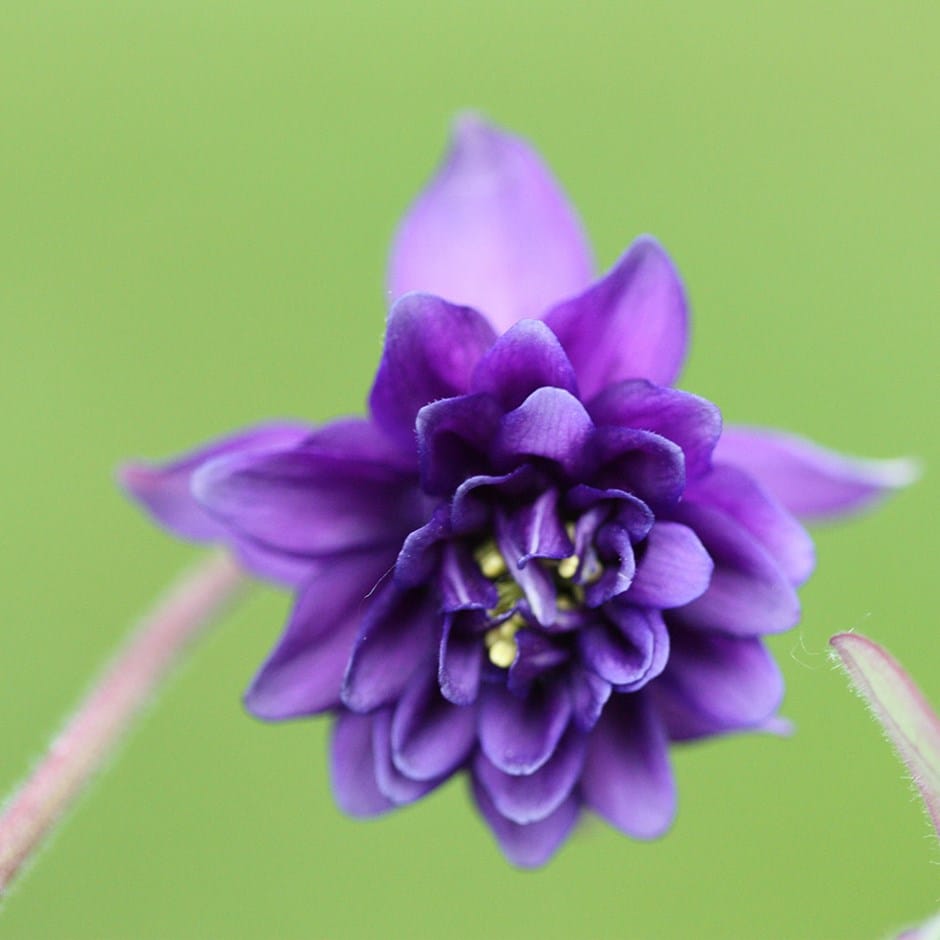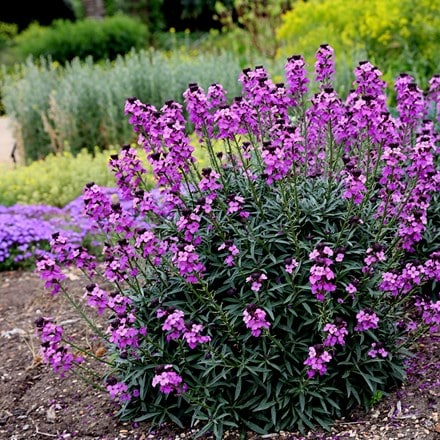Eventual height & spread
Aquilegia vulgaris var. stellata 'Blue Barlow' (Barlow Series)
granny's bonnet
- 9cm pot
- £10.99
- In stock (shipped within 2-3 working days)
- 3 × 9cm pots
- £24.99 £8.33 each
- In stock (shipped within 2-3 working days)
- 6 × 9cm pots
- £39.99 £6.67 each
- In stock (shipped within 2-3 working days)
- approx 40 seeds
- £2.97 £3.49
- In stock (shipped within 2-3 working days)
Delivery options
- Standard £5.99
- Position: full sun or partial shade
- Soil: moderately fertile, moist but well-drained soil
- Rate of growth: average
- Flowering period: May to June
- Hardiness: fully hardy
Intensely coloured violet blue sepals, that provide a vibrant contrast to the yellow stamens, form slightly nodding or outward-facing flowers on stiff, upright stems.
Aquilegia vulgaris var. stellata 'Blue Barlow' looks very effective when planted next to silver foliage, and the flowers will last well in cut arrangements.
Aquilegia vulgaris var. stellata 'Blue Barlow' looks very effective when planted next to silver foliage, and the flowers will last well in cut arrangements.
Plant Aquilegia in sun or partial shade in moist but well-drained soil. It's tolerant of a range of soil types and will often self-seed if happy, creating natural-looking drifts.
Remove faded flower stems to tidy the plant or leave them to self-seed.
Lift and divide large clumps in early spring and apply a generous 5–7cm (2–3in) mulch of well-rotted manure or garden compost around the plant. Divided specimens may take some time to establish since they don't like having their roots disturbed.
Remove faded flower stems to tidy the plant or leave them to self-seed.
Lift and divide large clumps in early spring and apply a generous 5–7cm (2–3in) mulch of well-rotted manure or garden compost around the plant. Divided specimens may take some time to establish since they don't like having their roots disturbed.
In autumn, surface-sow on moist compost in small pots or seed trays and keep them in a greenhouse or cold frame at 15-20°C (59-68°F). Germination can be slow (up to 3 months) but seedlings should be thinned out as they grow on and over-wintered under glass before planting out after hardening off in spring. Alternatively, spring sowing can be undertaken as before, often without the need for heat.





